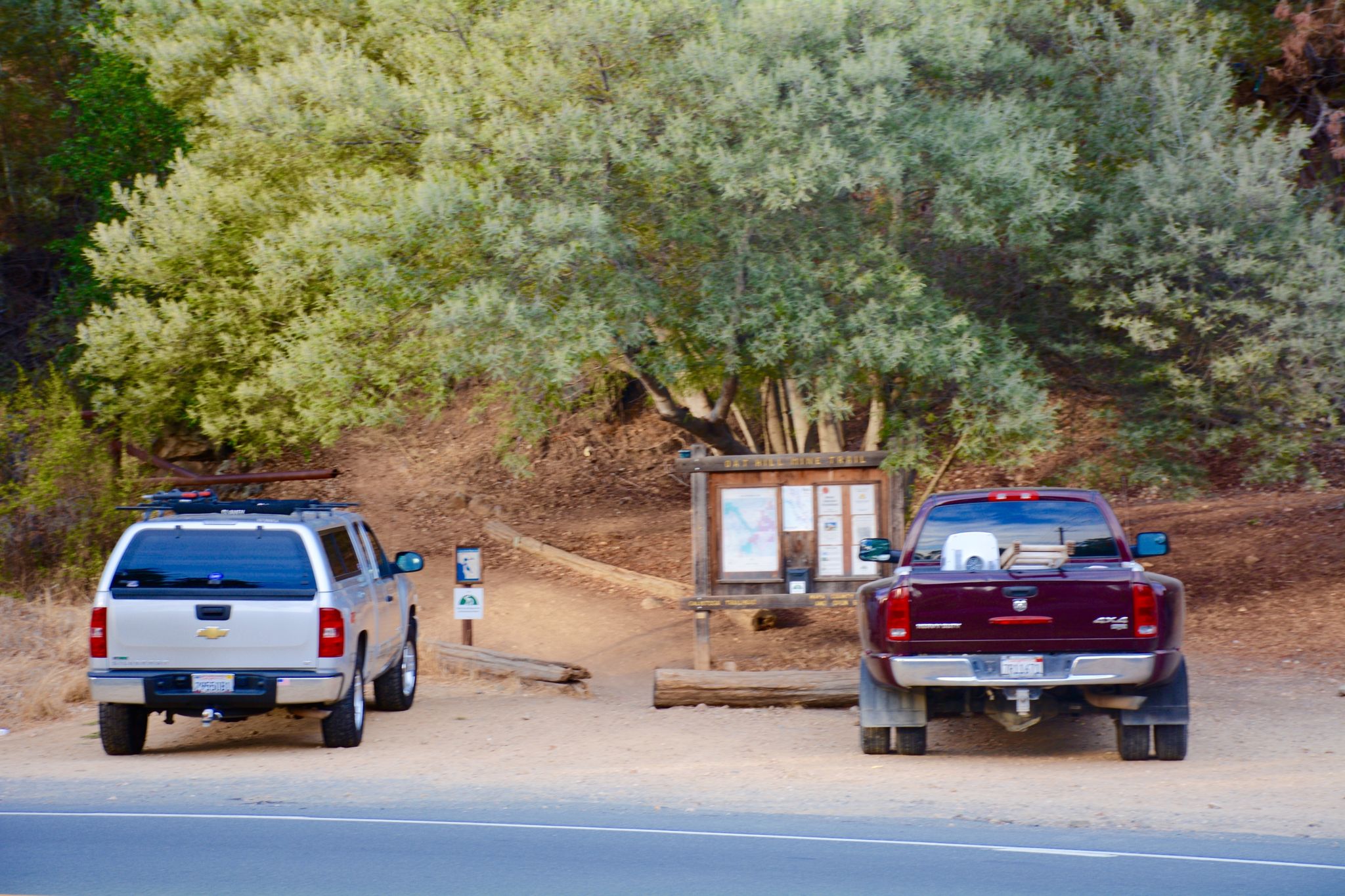Note: The Northern Section of the trail (between the Pallisades Trail Junction at Holms Place & the Aetna Springs Trailhead) will be closed between Saturday August 8th - Sunday September 20th. This annual closure is a safety request connected to high risk of wildfires and deer hunting season on private property nearby.
Oat Hill Mine Trail follows an 8.3 mile former stagecoach route between Calistoga and the western end of Aetna Springs Road in Pope Valley. The trail can be done as an out-and-back, generally with a turnaround at base of the Palisades (Holms Place) or as a one-way shuttle trip if you can convince a driver to meet you at the eastern or western trailhead parking lots.
With the discovery of cinnabar deposits in the late 1800’s, Napa County saw the development of several mines to extract the ore and produce quicksilver (mercury). The most productive of several mines in the area was the Oat Hill Mine which accounted for one third of the total U.S. production of quicksilver from its discovery in 1872 until the late 1960’s. The mine was idle from 1923 to 1927 when it reopened and operated continuously through 1944. After the Second World War mining profits fell, and mining ceased in the late 1960’s.
Construction of the Oat Hill Mine Road was started in 1873 to provide a transportation route between Calistoga and the mines. It took 20 years to complete the project and the road was officially opened in 1893. The road connected Calistoga to the Oat Hill Mine with a side branch descending to Aetna Springs. Today the 8.3-mile-long Oat Hill Mine Trail follows the original route between Calistoga and the western end of Aetna Springs Road in Pope Valley. The old mercury mines are further to the north. They are not open to the public.
The trail provides a magnificent recreational experience for hikers, mountain bikers, and equestrians, although the trail is rough and rocky in many places and can be quite challenging. Visitors can enjoy sweeping views of Napa Valley along the lower Oat Hill Mine Trail, while the middle and upper sections of the trail cross striking volcanic formations. The trail passes through a diverse mixture of Oak, Douglas Fir, Gray Pine and Cypress forests, chaparral, and grasslands. Spring wildflowers are exceptional.
Midway along the trail is the homestead property of Karl Gustov Holm, who built a log cabin on his 160-acre homestead in 1893, and added a new house in 1896. Parts of stone wall for his barn and a few old fruit trees remain today. Ruts carved by heavy wagons traversing the soft volcanic rock are still visible along parts of the middle and upper trail. Hand-laid stone walls are visible at many locations along the trail.
